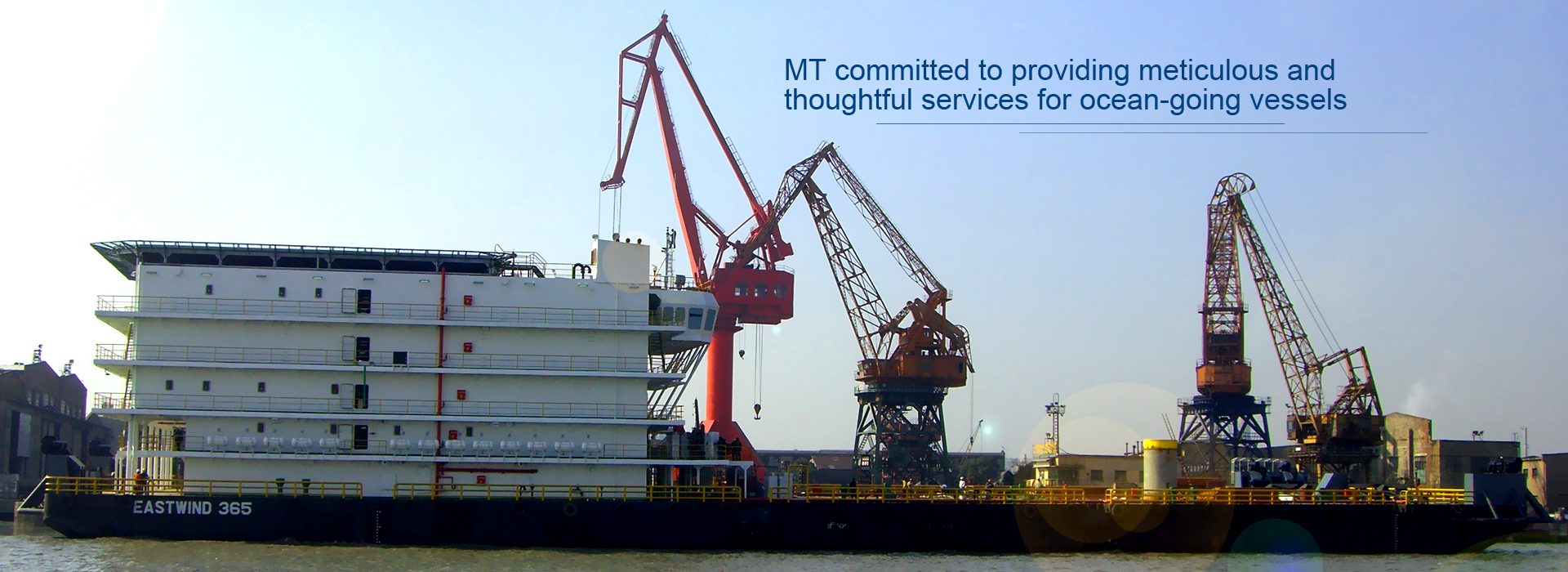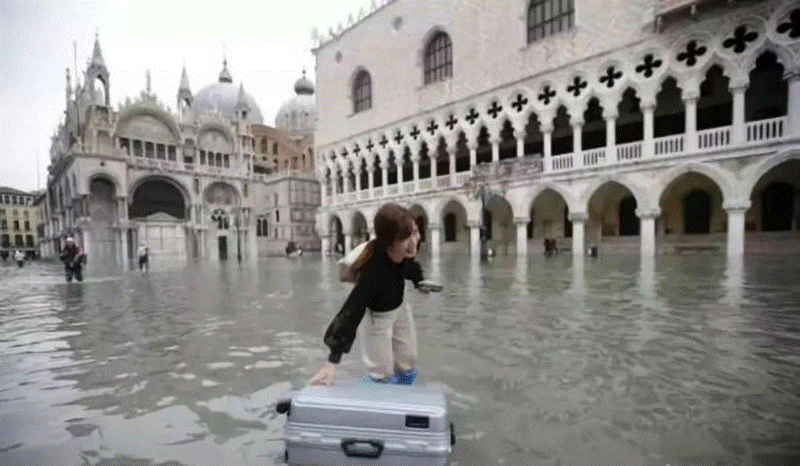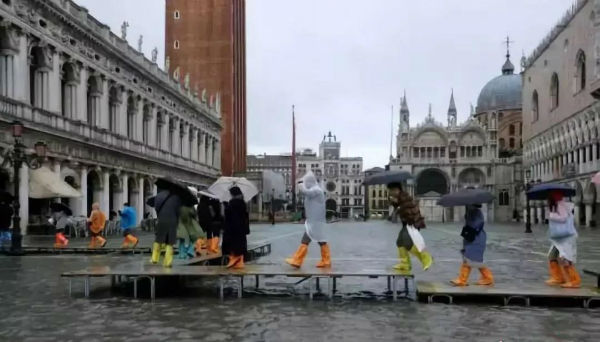


Venice, Italy, is suffering the biggest flood damage in half a century due to bad weather in recent days. The flood has raised the water level at high tide. 80% of Venice is underwater and the city is in a "state of emergency", eurotimes.com reported. Affected by the seasonal spring tide, Venice "flooded" news will appear every year.
For thousands of years, Venice, known as the "Pearl of the Adriatic Sea", flourished because of water, but now it is facing the danger of being submerged. Why did Venice fall into the present situation and what did it do to fight against the future of "total disappearance"?

On Venice's main road, the flood surges like a river over the stone pavement.
World cultural heritage, Italy's "water city" Venice is famous for its canals, gondola water buses, and magnificent palaces and churches. The city is often flooded from October to December every year, but the recent floods have been particularly serious.
Italy's ansa news agency reported that the water level in Venice rose to 187 cm on the night of the 12th, the second highest water level in the city's history. In November 1966, Venice had a high tide of 193 cm, making 5000 residents homeless.
On the 13th, a new wave of tide came again, which may have killed two people. On the 14th, Luigi brugnaro, the mayor of Venice, declared a "state of emergency" in the city and called on everyone to mobilize to tide over the difficulties.
It is reported that the flood was caused by low pressure weather in northern Italy, which caused strong winds to sweep across Italy from south to north, while flooding the Venice lagoon with tides. The historic center of Venice has been damaged by floods in many places, and the famous St. Mark's Cathedral, the Phoenix opera house and the Palazzo Pesaro are damaged. At present, all schools in Venice are closed. About 60 vessels, including the Venetian water bus, were seriously damaged.
"We are facing an apocalyptic destruction, with 80 per cent of the cities under water and the damage is unimaginable," said Luca ZAIA, President of the Veneto region Mayor brugaro said the impact of the flood will reach hundreds of millions of euros.

It is also reported that Venice, which is built on 118 small islands and consists of 177 canals and about 350 bridges, is at a lower altitude. In addition, it is located on the loose stratum called "soft soil Delta", which is very vulnerable to flood. A number of studies have shown that Venice is at risk of being completely engulfed by the sea at the end of the century.
According to the analysis of the Intergovernmental Panel on climate change of the United Nations, there are three main reasons for the frequent flooding of Venice: first, the bottom of Venice Lagoon rises due to silt, making it easy for seawater to pour back; second, human factors such as natural gas exploitation and groundwater extraction lead to the subsidence of Venice's foundation; third, the rise of sea level caused by global warming.
Venice mayor brugaro blamed the flooding, saying on twitter that the rare flood was the impact of climate change.
In addition, according to the Washington Post, brugaro said on the 11th that "Moses", an unfinished water conservancy project, should also be responsible for the flood.
In Italian, the seasonal flood in Venice is called Aqua Alta. Every winter, due to the influence of tide and monsoon, the tide rises. Generally, it is called Aqua Alta if it exceeds 110cm.
In order to warn the local people, the Venetian government has set up a special website to forecast the tide, which publishes news at a fixed time every day to predict the tide height in four periods of the day, the French "Le Monde" reported. In case of aqua Alta, the Venetian government has a complete set of early warning mechanism. The government will send free warning messages or e-mails to local residents' mobile phones, and residents can also query water level information through official websites, social platforms and other media channels.
In addition, if the flood water level exceeds 110cm, the whole city of Venice will issue flood air defense alarm three hours before the high tide. Different water levels have different alarm sounds to remind residents and tourists to pay attention to personal safety, so that businesses can be prepared in advance to minimize economic losses.
The most important is the water control project code named "Moses". According to the plan, 79 giant hinged cement slabs will be built around the city, each 28 meters high, 20 meters wide and weighing 300 tons, AFP reported. When the tide rises rapidly, these cement slabs will rise to prevent the city from being flooded. But the project has been criticized as "outdated, expensive and inefficient" and failed to complete on time due to corruption scandals. It was accused by residents as "stealing 6 billion euro for nothing".
According to the original estimate, the sluice can be used for up to 100 years. However, local media said that the Department's gate had been rusty after less than 10 years of water, requiring longer maintenance time.
According to the Venice water authority, in addition to the "Moses plan", Venice will also prevent the coastline from being eroded by building new beaches, expanding coastlines, building "protective dike" projects, and repairing ancient coastal protection walls. Meanwhile, it will try its best to restore the shape of the lake area and curb and reverse environmental deterioration. However, due to the development of large ports and the obstruction of giant cruise ships, these measures have achieved little.
"Venice's future is at stake. We can't live like that anymore It's also about our international credibility. " Mayor brugaro said. The annual flood invasion makes more and more residents choose to flee. How many people are really fighting for "against destiny" determines the future of Venice.